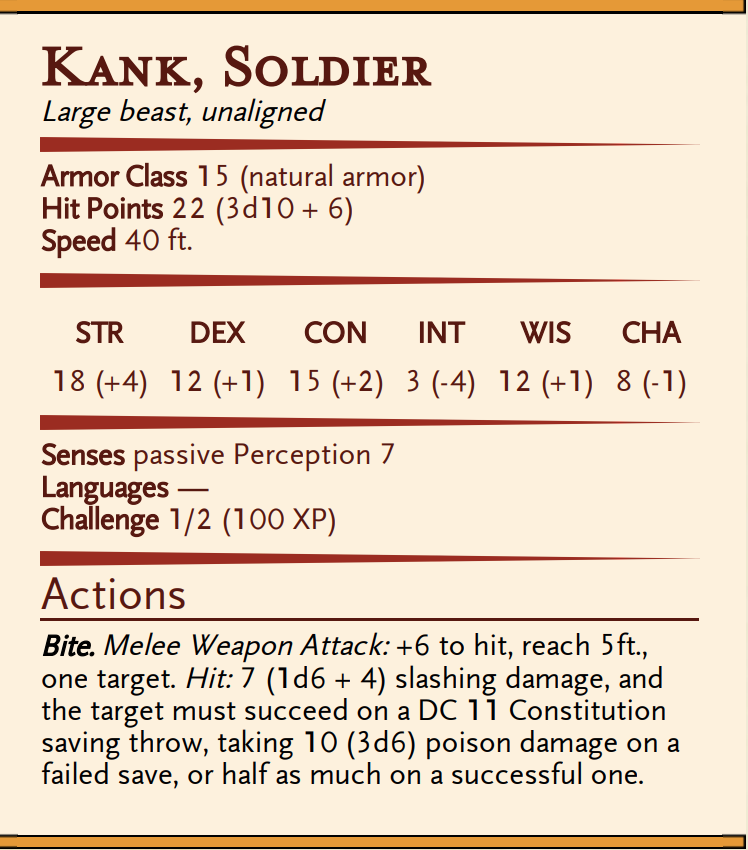In a fight, the soldiers attack first, striking with
their pincers to try to paralyze the target with its poison.
If pressed, the food producers will also fight, but they lack
the poison of the soldiers. The brood queen never attacks,
even in self defense.
Terrain: Tablelands or Hinterlands
Frequency: Common
# Appearing: 50-500
Kanks are large docile insects. Their bodies have a black
chitinous exoskeleton, and are divided into three sections:
head, thorax, and abdomen. Kanks often weigh as much
as 400 pounds and stand up to four feet tall at the back,
with bodies as long as eight feet from head to abdomen.
Around their mouths, they have a pair of multi-jointed
pincers which they use to carry objects, to feed themselves,
and occasionally to fight with. On their thoraxes, they
have six lanky legs ending in a single flexible claw with
which the kank can grip the surfaces it walks upon. Their
bulbous abdomens have no appendages, and are simply
carried above the ground.
Kanks are often used as caravan mounts, as they can
travel for a full day at their top speed, carrying a twohundred pound passenger and two-hundred pounds of
cargo. They also make decent herd animals and are
especially valued by elves. Because they can digest nearly
any sort of organic matter, these hardy beasts will thrive
in almost any environment. In addition, they require little
attention, for a kank hive instinctively organizes itself into
food producers, soldiers, and brood queens.
The food producers secrete melon-sized globules of
green honey that they store on the their abdomens to
feed the young and, when food is scarce, the rest of
the hive. Humans and demi-humans can live on this
nectar alone for periods of up to three weeks, but must
supplement their diets with meat and/or vegetation after
longer periods. The sweet taste of this nectar makes it very
valuable, and it is this that has caused the kank to be
domesticated. It should be noted that wild kanks produce
far fewer globules than their carefully breed cousins.


